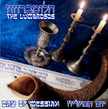And the Word … dwelt among us
What does the Tabernacle teach us? Let me now take you on a journey to the feet of Jewish sages who have pondered the question for hundreds of Years.
Many have suggested that as he built the Tabernacle, Bezalel saw it as a microcosm of the creation of the universe. Here is how it works. King David describes the first day of creation when God created the Heavens and the Earth using the following words, stretching out the heavens like a tent (Psalms 104:2). So, we find that a curtain (similar to that of a tent) was stretched out above the Tabernacle. The colors of the material used also correspond to the colors of sky and earth. On the second day of creation, God made the firmament as a separation. Similarly, in the Tabernacle there was a curtain separating one part from another. Just like on the third day of creation God gathered the waters into one area, in the Tabernacle there was also a designated place to gather water in a basin. Corresponding to the luminaries created on the fourth day, we find the menorah with its lights in the Tabernacle. On the fifth day of creation, God created the birds. Similarly, there were birds brought as offerings on the altar of the Tabernacle. And corresponding to the creation of man on the sixth day, the service in the Tabernacle was led by the High Priest. The Torah describes how the work was completed on the seventh day of creation and how that day was blessed and sanctified by God. The idea of the Tabernacle was to make a place for God to live on earth. It represents therefore the restoration of all things to the day when as He was in the Garden of Eden, Adonai would walk the earth alongside with man.
Some have also viewed the Tabernacle as a microcosm of the human body with the Ark as the heart of a person, the cherubs spreading their wings over the Ark as the lungs that spread out around the heart. The table with the showbread represented a person's stomach while the menorah and its oil lamps corresponded to a person's mind. The frankincense symbolized the sense of smell and the water basin represented the fluids in the human body. Finally, the curtains symbolized a person's skin and the beams represented the ribs. Jewish sages taught that every person is a microcosm of the entire universe just like the Tabernacle.
As farfetched as these musings may seem, we can’t help but realize that our Jewish sages were on the right track in their understanding of the Tabernacle. After all, did not Paul say that to their advantage, the Jewish people had been entrusted the oracles of God (Romans 3:1-2)? As the spirit of God came to fill the earthly Tabernacle, so it filled the earthly ‘tabernacle’ of the human body of the person of Yeshua who is the representation of the Presence of God among us, in God’s created universe.
As we study these things, may we look forward to the time when Messiah will once again walk the earth among us. May it be soon Abba, even in our days!
 RSS Feed
RSS Feed


